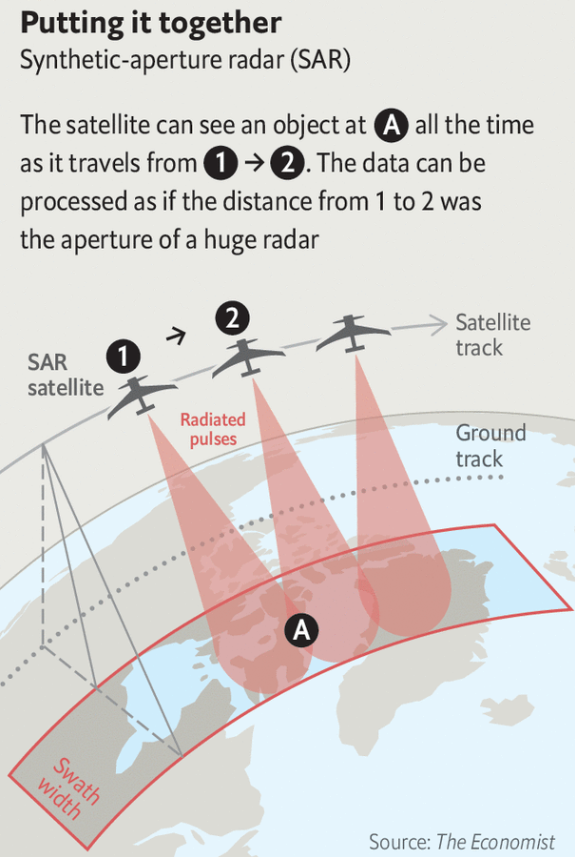Synthetic Aperture Radar (SAR) & NASA-ISRO SAR (NISAR) Mission

What is SAR?
SAR uses microwave pulses (instead of visible light) to create high-resolution images, even in darkness or cloudy weather.
A small moving antenna (on a satellite/aircraft) records echoes from the ground, and advanced processing combines them to simulate a large virtual antenna, improving resolution.
Advantages: Works 24/7, penetrates clouds/smoke, detects changes in soil, water, ice, and man-made structures.
NASA-ISRO SAR (NISAR) Mission
On June 12, 2025, the NISAR satellite arrived at ISRO’s Sriharikota spaceport for launch.
Once operational, NISAR will:
Scan nearly all of Earth’s land and ice surfaces twice every 12 days.
Provide unprecedented environmental data (e.g., deforestation, glaciers, disasters).
SAR Antenna Mechanism :
-
Antenna Role:
-
Central to SAR; it receives the microwave echoes bounced back from the surface.
-
-
Resolution Dependence:
-
Normally, longer antennas provide better image resolution.
-
-
Practical Challenge:
-
Constructing and operating large physical antennas in space is difficult.
-
-
SAR Solution:
-
Uses a smaller antenna mounted on a moving platform (e.g., satellite or aircraft).
-
-
Synthetic Aperture Concept:
-
As the platform moves, echoes are captured from different positions.
-
Each echo carries slightly different spatial information.
-
-
Signal Processing Technique:
-
Collected echoes are combined using precise timing and phase data.
-
This mimics a much larger antenna — sometimes hundreds of metres long — synthetically.
-
-
Outcome:
-
Achieves high-resolution imaging with a physically compact antenna setup.
Advantages of Synthetic Aperture Radar (SAR)
-
All-Weather Capability:
-
Microwaves can penetrate clouds, smoke, and light rain.
-
Enables continuous data collection day and night, in all weather conditions.
-
-
Wide Area Coverage:
-
When placed on orbiting satellites, SAR can scan hundreds of kilometres of land in a single pass.
-
-
Material Differentiation:
-
Different surfaces (soil, water, vegetation, metal) reflect microwaves differently.
-
Helps in distinguishing between various natural and man-made features.
-
-
Change Detection:
-
Can detect subtle surface changes (e.g., soil moisture, deforestation, flooding) that optical sensors may miss.
-
-
High Temporal Resolution:
-
Frequent revisits enable monitoring of dynamic changes like glacier movement, crop growth, or disaster impact.
-
